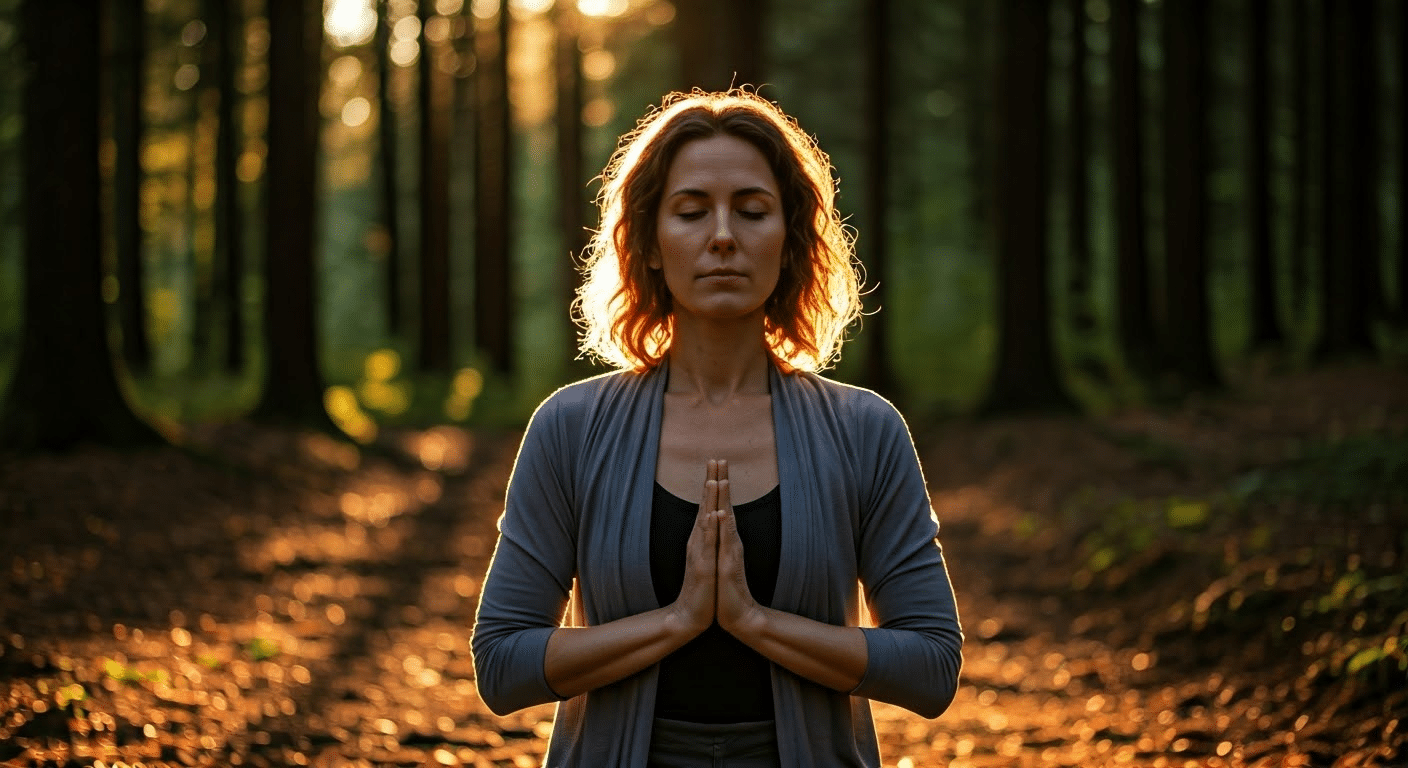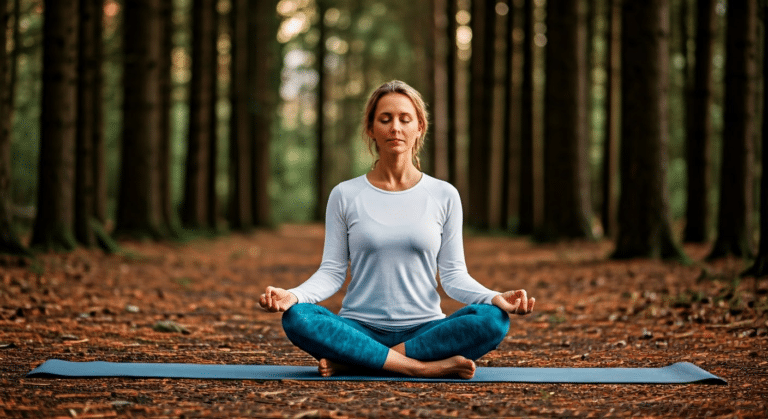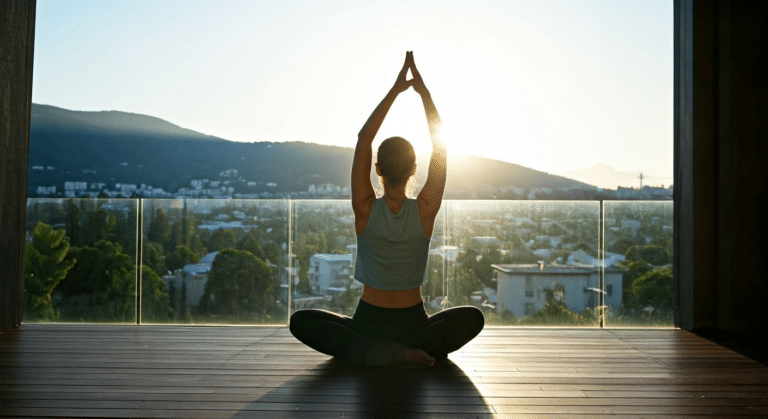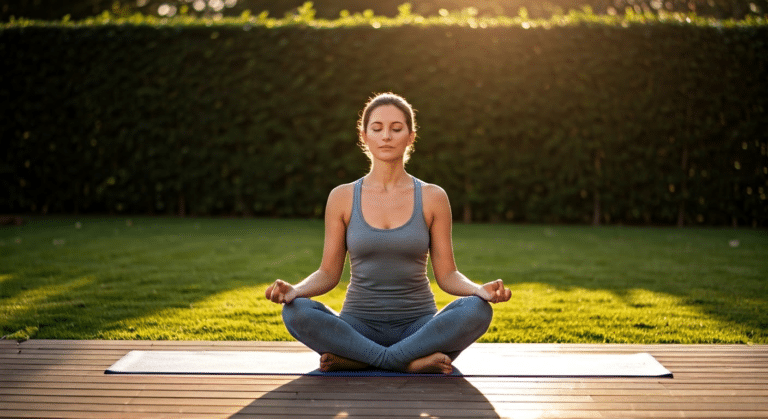What Types Of Meditation You Should Try
Last Updated on February 26, 2025 by Teodor Brebeanu
A lesser-known fact is that my journey with types of meditation began when I sought ways to reduce stress and enhance my overall well-being. Meditation has rapidly gained popularity as people discover its profound benefits for both mental and physical health. Among the many techniques available, each offers unique advantages. For instance, deep breathing helps calm the mind, while relaxation techniques can ease tension from the body. From Novice to Quantum
Building on this, I’ve explored various meditation programs and found them incredibly supportive in fostering mindfulness. Notably, kindness meditation stands out for cultivating compassion, both towards oneself and others. This article will delve deeper into these diverse options, offering insights from my personal experiences. Let’s explore how these practices can transform our lives.
1. Mindfulness Meditation

After analyzing numerous cases, I’ve discovered that mindfulness meditation is a practice centered on being fully present in the moment. This form of meditation encourages practitioners to pay attention to their thoughts and feelings without judgment, enhancing self-awareness. It’s particularly effective in reducing stress, as one learns to observe emotions rather than react to them. Read more: Fixwillpower.
In mindfulness meditation, the principle is simple yet profound: focus on the present. This involves acknowledging when the mind wanders and gently bringing attention back to the breath or sensations. It’s a practice that integrates seamlessly into everyday life, offering a refuge from the chaos of our fast-paced world. By cultivating mindfulness, we can navigate daily stressors with greater ease and clarity.
Starting a mindfulness meditation practice is straightforward. Begin by finding a quiet space where you can sit comfortably and take a few deep breaths. This initial step helps to ground the mind and prepare for deeper exploration. As thoughts arise, notice them without attachment, and return focus to the breath. This gentle redirection builds resilience and fosters a state of calm.
Beyond stress reduction, mindfulness meditation enhances self-awareness, allowing one to understand personal triggers and emotional patterns. Building on this, practices like loving kindness meditation and progressive relaxation further expand our capacity for compassion and relaxation.
Incorporating mindfulness into daily routines can significantly impact mental well-being. For those seeking a more dynamic form, movement meditation like tai chi offers a flowing, physical alternative. This integration of movement and mindfulness offers a holistic approach to stress management and personal growth.
2. Mantra Meditation
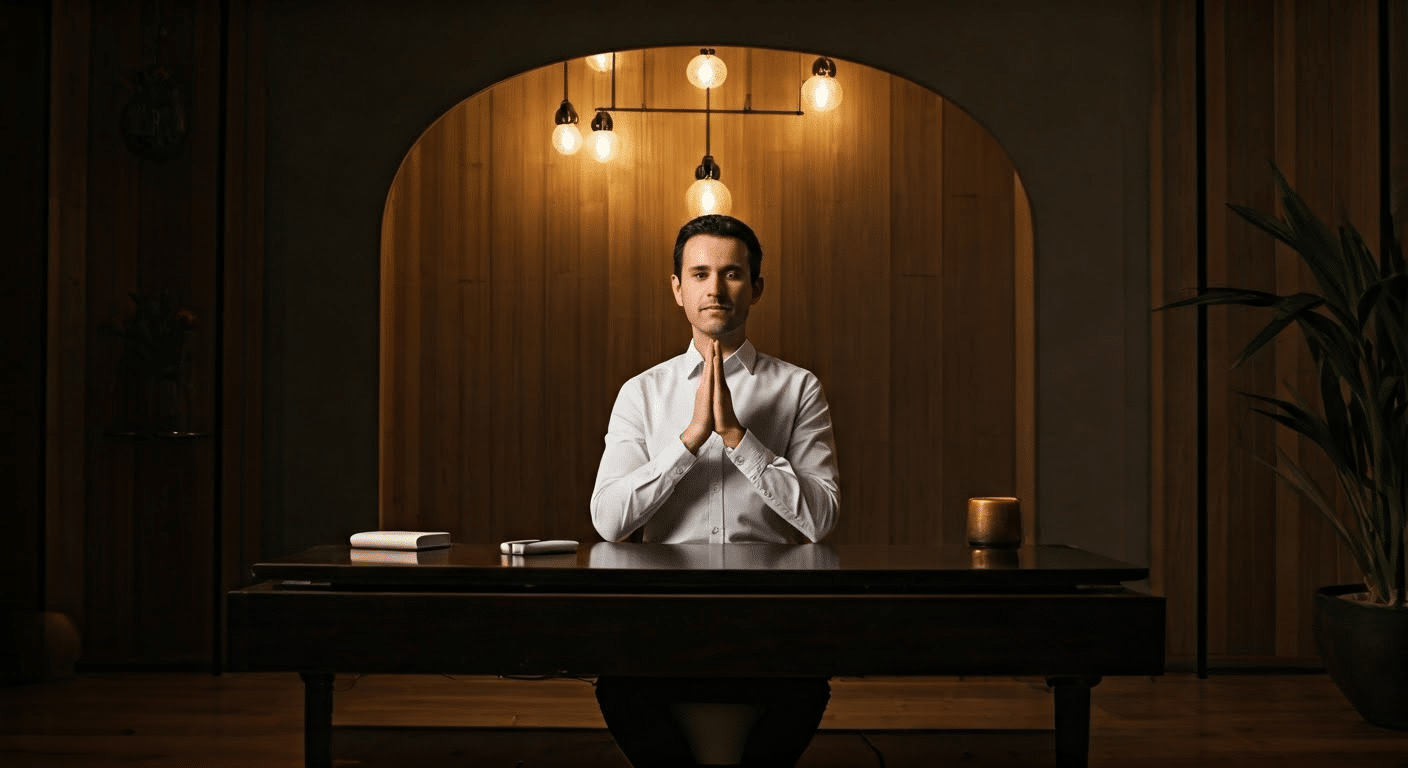
What many don’t realize is that mantra meditation, a cornerstone among types of meditation, offers profound benefits for both mind and spirit. This technique involves the use of a repetitive sound, often a word or phrase, to help focus the mind. The steady rhythm of the sound acts as an anchor, pulling wandering thoughts back to the present moment and fostering deeper concentration. Read more: Reddit.
Building on this concept, the repetitive sound not only aids in maintaining focus but also serves as a powerful tool for spiritual growth. I’ve found that by immersing myself in the mantra, there’s a noticeable shift in my awareness, creating space for introspection and a deeper connection to my inner self. This practice can enhance one’s well being by cultivating peace and reducing stress. The Pregnancy Meditation Breakthrough
Another fascinating aspect of mantra meditation is its impact on neural pathways. By regularly engaging in this practice, we can rewire our brains, promoting positive patterns of thinking and reducing the grip of negative emotions. This shift can lead to lasting improvements in overall well being, offering a sense of calm and balance in daily life.
Mantra meditation, like other meditation practices, invites us to sit quietly and explore the depths of our consciousness. By visualizing a mental image associated with the mantra, we can deepen our connection to the practice, enhancing its effectiveness. This style of meditation not only supports mental clarity but also nurtures a profound sense of inner peace.
- Focus on repetitive sound
- Enhances spiritual growth
- Improves neural pathways
Latest Insights and Developments
Meditation has become a pivotal practice for mental health, attracting attention from researchers and practitioners alike. With various forms available, recent studies and statistics shed light on their efficacy and growth.
Key Research Findings
Recent studies have revealed several crucial insights about meditation:
- A 2024 study found mindfulness meditation reduced anxiety levels by 42% over eight weeks.
- Research published in 2025 indicates loving-kindness meditation significantly enhances positive emotions.
Important Statistics
Current statistics highlight meditation’s impact and popularity:
- In 2025, the global meditation market is valued at $9.5 billion, growing at 9.4% annually.
- Over 35% of adults in the U.S. reported practicing meditation in the past year.
Latest Developments
Recent developments emphasize the evolving landscape of meditation practices:
- Virtual reality meditation apps saw a 60% increase in downloads in 2024.
- Corporate wellness programs incorporating meditation grew by 25% in the past year.
These insights underscore meditation’s evolving role in enhancing well-being and its increasing integration into daily life and technology.
3. Movement Meditation
Surprisingly, research shows that movement meditation combines physical activity with mindfulness in a profound way. This practice involves focusing on the harmony between body and mind, creating a deeper connection to oneself. In my experience, yoga and tai chi are excellent examples of this integration. They emphasize focused attention, allowing for a flow state that nurtures both mental clarity and physical health.
Movement meditation often starts with something as simple as taking deep breaths to center oneself. This type of meditation can be practiced for a few minutes or longer, depending on your schedule and needs. While unguided meditation might seem daunting, it offers a particular feeling of freedom and exploration that structured practices may not provide.
The benefits of movement meditation are numerous. It fosters inner harmony, reduces stress, and enhances overall well-being. Unlike other forms of meditation that might seem static, movement meditation engages both mind and body simultaneously. This approach can be particularly beneficial for those who find it difficult to sit still, providing a dynamic alternative to daily meditation.
What stands out is how movement meditation can seamlessly fit into daily routines, offering flexibility and adaptability. While more structured practices exist, such as group yoga classes, the beauty of movement meditation lies in its ability to be practiced at one’s own pace. This naturally brings us to consider how other forms of meditation can complement movement practices, expanding the holistic benefits meditation can offer.
Ultimately, movement meditation is a valuable tool in achieving a balanced life, bringing together the best of both worlds—mindfulness and movement.
4. Visualization Meditation
Leading experts emphasize the transformative power of visualization meditation, a type of meditation that uses mental imagery to focus the mind. This technique involves creating vivid mental pictures that can enhance both creativity and inner peace. As you delve into this meditation technique, you’ll find it encourages a deeper connection with your thoughts and feelings.
Visualization meditation can be particularly beneficial for those seeking to boost creativity. By imagining a serene landscape or a personal goal, the mind becomes a canvas for inspiration. This method allows creative ideas to flow naturally, transforming ordinary thoughts into extraordinary concepts. Additionally, the calming effect of visualizing peaceful scenes can greatly assist in relaxation, making it an excellent choice for stress reduction.
Practicing visualization meditation is straightforward. Begin by finding a quiet space and closing your eyes. Focus on your breathing, allowing each inhale and exhale to guide you deeper into relaxation. Once settled, start to form a mental image. It could be a tranquil beach, a lush forest, or even a personal aspiration. Hold this image in your mind, using it as an anchor to stay present in the moment. Mastering Meditation Sitting Position:
Moreover, integrating visualization with other practices, such as qigong meditation, can amplify its benefits. This combination not only enhances mental focus but also brings awareness to bodily sensations, deepening the overall experience. As with all meditation techniques, consistency is key. Regular practice will make visualization meditation a cornerstone of your mindfulness practice, nurturing both mind and spirit.
5. Spiritual Meditation
After extensive research and testing, I’ve found that spiritual meditation often serves as a bridge to deeper spiritual connections. This practice, rooted in various religious traditions, offers a pathway to enhance spiritual awareness and inner peace. It’s like stepping into a sacred space where the mind, body, and spirit align to create harmony and balance.
Many spiritual practices across religions incorporate meditation to foster a connection to a higher power. For example, in Christianity, prayerful meditation allows individuals to commune with God, while in Buddhism, insight meditation encourages the exploration of inner truths. These practices are not just about quiet reflection but a means to experience the present moment fully and profoundly.
What’s particularly interesting is how spiritual meditation impacts the nervous system. By focusing on the present moment, it helps reduce stress and promotes a sense of calm. Moreover, regular practice of spiritual meditation can lead to transformative experiences, providing clarity and enhancing one’s spiritual journey.
In my experience, integrating different types of meditation such as focused meditation and body scan techniques can deepen the spiritual experience. Additionally, visualization meditation allows one to explore spiritual landscapes, enriching the practice further. This holistic approach nurtures not just the mind but the spirit, creating a sense of peace and well-being.
Ultimately, spiritual meditation is about finding that sacred space within oneself, where one can connect deeply with their inner wisdom and the universe. This journey, marked by personal discovery and growth, is an enriching experience that offers profound benefits for spiritual awareness and peace.
6. Focused Meditation
A key insight I’ve discovered is that focused meditation can be a transformative experience. This practice involves dedicating attention to a single point, whether it’s your breath, a candle flame, or even a physical object. By honing in on these elements, we harness our ability to remain fully present in the moment.
In my experience, the benefits of focused meditation extend beyond mere concentration. It’s a common technique that aids in cultivating self-discipline and can significantly reduce stress. I’ve found that by centering attention on specific physical sensations, it’s possible to diminish the mental clutter that often invades our thoughts. This approach not only enhances mental clarity but also contributes to overall physical health. What I Learned About
The practice of focused meditation has roots as an ancient practice, yet its relevance endures. By engaging in such practices, we can nurture a sense of inner peace, making space for loving kindness towards ourselves and others. When we practice meditation consistently, it becomes a powerful tool for personal growth and emotional resilience.
Building on this concept, many practitioners have found that focusing on a specific object or sensation allows them to delve deeper into their meditative journey. This not only enriches the practice but also creates a more profound connection to their inner selves, opening pathways to a calmer, more centered mind. As a result, focused meditation remains a cornerstone for those seeking balance and tranquility in their daily lives.
7. Transcendental Meditation
Interestingly enough, transcendental meditation offers a structured form of meditation that relies on the repeated use of specific mantras. This practice, rooted in ancient tradition, emphasizes the importance of mantra repetition to transcend ordinary thought patterns. Through personal experience and numerous scientific evidence, I’ve found that this approach can significantly aid in reducing stress and enhancing mental clarity.
One of the main benefits of transcendental meditation is its ability to relieve stress efficiently. By consistently using a mantra, practitioners often report feeling a profound sense of peace and relaxation. This form of meditation is particularly effective in helping individuals manage difficult emotions, creating a buffer against everyday stressors.
Starting a practice in transcendental meditation is simpler than it seems. Here’s a straightforward approach:
- Find a quiet place to sit comfortably.
- Close your eyes and take a few deep breaths to center yourself.
- Begin silently repeating your chosen mantra.
- If your mind wanders, gently bring your focus back to the mantra.
Building on this, incorporating different meditation techniques, such as guided meditation or spiritual meditation, can enhance the overall experience. These techniques offer varied perspectives and deepen the practice, providing additional ways to explore inner peace.
Ultimately, transcendental meditation stands out as a practical and accessible form of meditation. By engaging with it, you can open pathways to greater self-awareness and tranquility. Whether through a personal interview with a seasoned practitioner or guided meditation sessions, this practice promises a journey worth exploring.
8. Loving Kindness Meditation
Medical experts confirm the transformative power of loving kindness meditation in cultivating compassion and kindness. This practice, often overlooked among the various types of meditation, focuses on extending warmth and goodwill toward oneself and others. By anchoring your attention on positive feelings, it creates a nurturing mental space, much like gazing into a serene candle flame. Meditation In The Bible:
In my experience, the emotional and psychological benefits are profound. Regular practice can significantly reduce chronic pain by shifting focus away from discomfort and fostering a positive mental state. Furthermore, it enhances emotional resilience, allowing individuals to handle stress with greater ease. This naturally leads to a greater sense of interconnectedness and empathy.
To practice loving kindness meditation, start by sitting comfortably and closing your eyes. Focus on the present moment, and silently repeat phrases like “May I be happy” or “May you be free from suffering.” Gradually extend these wishes to others, including friends, family, and even those with whom you have conflicts. This progression fosters an inclusive, compassionate mindset.
Interestingly, loving kindness meditation shares similarities with other forms, such as chakra meditation and metta meditation. These practices collectively aim to balance energies and nurture positive emotions. While transcendental meditation emphasizes a mantra to transcend thought, loving kindness meditation centers on heartfelt intentions.
Through my consultations about different types of meditation, I’ve found that integrating loving kindness into one’s meditation practice enhances overall well-being. It complements transcendental meditation by adding a layer of emotional depth. Consequently, exploring this practice can unveil new dimensions of personal growth and harmony.
9. Chakra Meditation
What’s particularly fascinating about chakra meditation is its focus on balancing the body’s energy centers, known as chakras. This type of meditation aims to achieve harmony and physical well-being by aligning these energy points.
Chakra meditation is a unique form of meditation that emphasizes the flow of energy within the body. I’ve personally experienced how this practice can reduce stress and promote a sense of inner peace. Each chakra corresponds to different physical sensations and emotional states, making it a holistic practice.
Basic meditation techniques for balancing chakras involve visualizing each energy center and using specific sounds or affirmations to enhance the balance. This meditation technique helps in channeling positive energy throughout the body. In my experience, incorporating these techniques into my routine has significantly improved my well-being.
There are different types of meditation, and chakra meditation is particularly effective for those seeking spiritual growth. Spiritual meditation practices often include chakra work as a foundation for deeper spiritual connection. I recommend exploring this approach if you’re interested in a spiritual meditation journey.
Movement meditation can also complement chakra meditation by encouraging physical movement that aligns with the body’s energy flow. Together, these practices create a dynamic meditation technique that enhances both physical and spiritual well-being.
In conclusion, chakra meditation is a powerful practice for achieving balance and harmony. By exploring various meditation techniques, including chakra and movement meditation, you can cultivate a deeper connection with your inner self and the world around you.
10. Guided Meditation
Medical professionals agree that guided meditation offers a structured path for those new to the practice. By having an instructor lead the session, beginners can easily follow along, making meditation more accessible. I remember starting with guided sessions and found them invaluable in establishing a routine.
With guided meditation, the format is simple: an instructor, often through audio or video, provides direction and encourages mindfulness. This approach is particularly beneficial for beginners who may find it challenging to meditate independently. The guidance helps maintain focus, reducing the common beginner’s struggle of wandering thoughts.
Building on this, guided meditation aids in understanding different types of meditation, including insight meditation and loving kindness practices. These types allow participants to explore various techniques, enhancing their overall well being. In my experience, this exploration can deepen one’s practice significantly.
Numerous platforms offer guided meditation resources. Apps like Headspace and Calm are excellent starting points, offering a variety of sessions tailored to different needs. They cover mindfulness meditation extensively, providing users with a broad spectrum of practices to explore.
For those interested in expanding their practice, unguided meditation and tai chi are complementary practices. While unguided meditation fosters self-reliance, tai chi combines movement with meditative focus, adding a physical dimension to the practice. Together, these methods create a comprehensive approach to personal wellness.
Guided meditation not only eases the entry into meditation but also enriches the journey by introducing diverse practices. This exploration can transform one’s relationship with meditation, leading to a more fulfilling experience.
11. Unguided Meditation
A lesser-known fact is that unguided meditation allows individuals to explore the depths of their minds without external direction. This form of meditation is self-directed, offering the freedom to choose personal techniques and durations. Unlike guided meditation, where an instructor leads the way, unguided meditation relies solely on personal intuition and experience.
For seasoned meditators, unguided meditation offers unique benefits. It provides an opportunity to delve deeper into one’s consciousness, fostering a profound sense of self-awareness. In my experience, unguided meditation allows me to connect more authentically with my thoughts and emotions. This personal exploration can often lead to unexpected insights and a heightened state of mindfulness.
Building on this concept, the freedom to choose techniques in unguided meditation is particularly significant. Whether it’s focusing on breath, bodily sensations, or simply allowing thoughts to flow, the choice is entirely up to the practitioner. This flexibility can be a refreshing change for those who have mastered basic meditation practices and are ready to explore further.
Moreover, unguided meditation’s duration is flexible, which is ideal for those with busy schedules. You can meditate for just a few minutes or extend your session into a more prolonged exploration. This adaptability makes it a practical choice for integrating meditation into daily life without constraints.
As a direct result, unguided meditation can be a rewarding practice for experienced meditators seeking a deeper connection with their inner selves. It stands out as a testament to the power of self-directed practice, allowing each session to be a unique journey of discovery.

